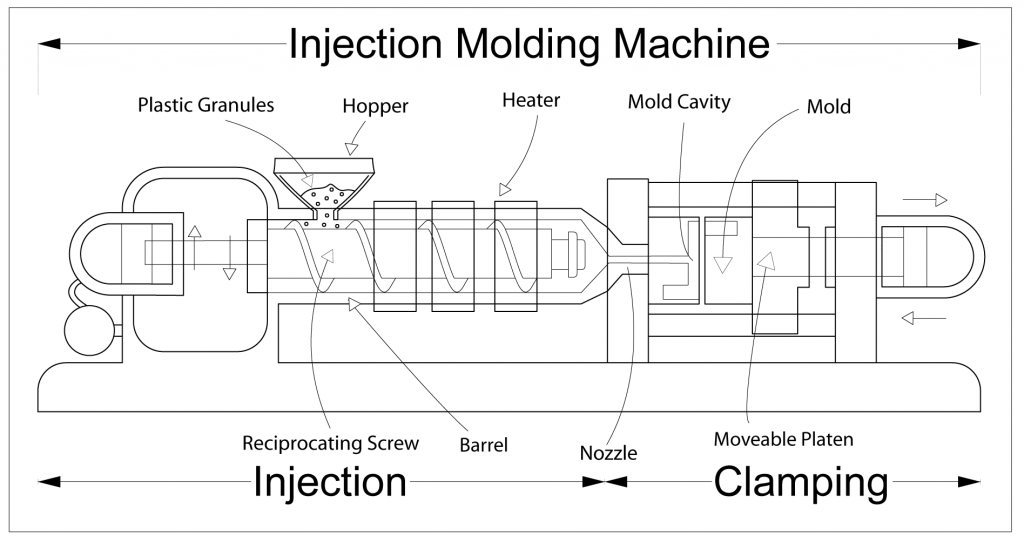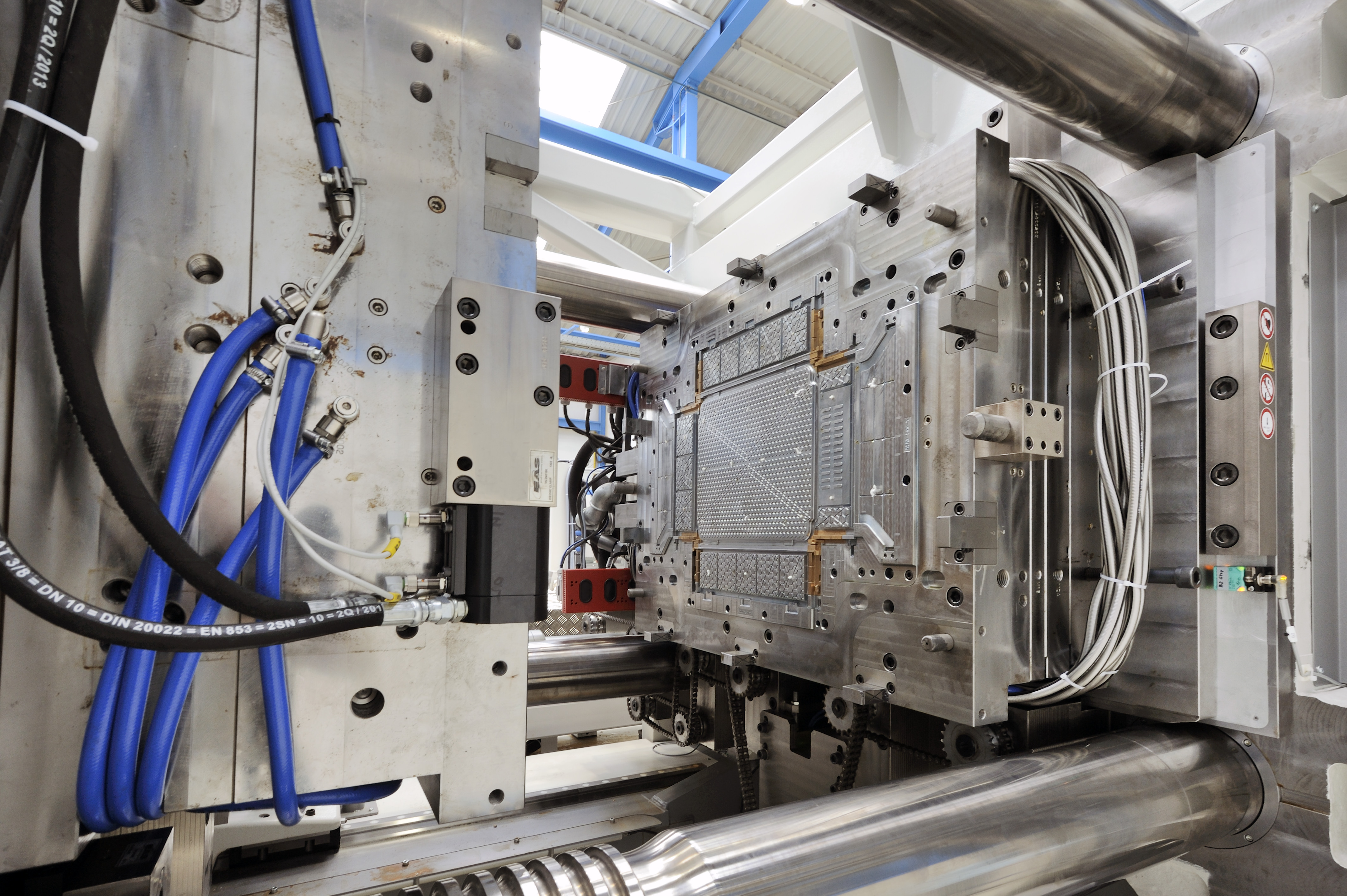Enhancing Item Development with Advanced Plastic Injection Molding Solutions
Enhancing Item Development with Advanced Plastic Injection Molding Solutions
Blog Article
Comprehending the Fundamentals of Plastic Injection Molding Procedures
Plastic shot molding works as a foundation of contemporary manufacturing, giving a systematic technique to creating intricate elements with precision. This process not just includes the basic steps of melting and infusing materials right into mold and mildews however additionally entails a nuanced understanding of numerous affecting aspects, such as temperature and stress. As markets significantly demand effectiveness and high quality, the intricacies of this approach end up being more critical. Discovering these necessary elements could expose how even small modifications can result in substantial enhancements in manufacturing results, increasing inquiries regarding the capacity for advancement in this well established procedure.
What Is Plastic Shot Molding?
Plastic injection molding is a widely used production process that changes thermosetting and thermoplastic products into precise and intricate forms. This method is favored for its capability to create high quantities of similar parts with extraordinary precision, making it a crucial approach in numerous markets, including vehicle, consumer goods, and clinical gadgets.
The procedure involves thawing the chosen plastic material and infusing it into a mold and mildew under high stress. The mold and mildew, designed to the specs of the desired component, permits the molten plastic to materialize as it cools and solidifies. When the product has actually hardened, the mold and mildew is opened up, and the finished component is ejected.
Plastic shot molding supplies a number of benefits, including decreased waste, uniformity in production, and the capability to integrate elaborate designs that might be testing with other producing approaches. Additionally, it supports a broad variety of materials, each offering unique residential properties that can be customized for details applications. As industries remain to innovate, plastic injection molding remains at the leading edge, allowing the advancement of sophisticated products that fulfill developing customer demands.
The Shot Molding Process
The injection molding process is an advanced strategy that includes several vital stages to generate top notch plastic elements. Plastic pellets are fed right into a warmed barrel where they are thawed into a viscous liquid. This molten plastic is then injected under high stress right into a precision-engineered mold and mildew, which shapes the material into the desired form.
As soon as the mold and mildew is loaded, the plastic is permitted to cool down and strengthen, taking the shape of the mold tooth cavity. Cooling time is crucial, as it affects the cycle time and the last residential properties of the shaped part. After enough air conditioning, the mold opens up, and the ended up element is expelled utilizing ejector pins.

Products Made Use Of in Shot Molding
Various products can be utilized in the injection molding procedure, each offering one-of-a-kind residential or commercial properties that cater to details applications. The most typically utilized materials consist of thermoplastics, thermosetting plastics, and elastomers.

Thermosetting plastics, like epoxy and phenolic resins, undertake a chemical change during the healing procedure, leading to a stiff, stringent structure. These materials are optimal for applications requiring high warmth resistance and structural stability, often utilized in automobile parts and electrical insulators.
Elastomers, including silicone and rubber-based materials, offer adaptability and resilience. Their one-of-a-kind residential or commercial properties make them suitable for applications that require flexibility, such as seals and gaskets.
Furthermore, specialty products like bio-based plastics and compounds are acquiring traction for their ecological advantages and boosted efficiency attributes, expanding the extent of shot molding applications in various markets. Comprehending the residential properties of these materials is crucial for choosing the ideal type for certain jobs.
Benefits of Injection Molding
Shot molding attracts attention as an extremely reliable production procedure that uses numerous benefits for generating intricate components with precision. Among the most significant advantages is the capability to develop elaborate styles that would be impossible or challenging to accomplish with various other techniques (Plastic Injection Molding). The process allows for tight tolerances and detailed attributes, making certain high-grade parts
Additionally, injection molding is recognized for its rapid manufacturing capacities, making it an ideal selection for high-volume production. Once the mold and mildew is created, components can be created swiftly, decreasing preparations and raising overall productivity. This effectiveness not just reduces manufacturing expenses yet likewise offers an one-upmanship out there.
The flexibility of materials made use of in injection molding better improves its allure. A large range of thermoplastics and thermosetting polymers can be used, allowing makers to select products that best satisfy their this page specific requirements, including strength, adaptability, and warmth resistance.
Additionally, the process minimizes waste, as excess material can often be reused and recycled. This sustainability facet contributes to a minimized environmental impact, making injection molding an accountable production option. Overall, the advantages of injection molding make it a recommended method for numerous his response markets.
Variables Impacting Product High Quality
While countless factors can influence product high quality in shot molding, understanding these aspects is critical for achieving optimal results. Trick aspects consist of product choice, processing criteria, and mold and mildew layout.
Product option plays a vital role, as different polymers show distinct residential properties that influence flowability, toughness, and thermal security. Inadequate material choice can lead to flaws such as warping or incomplete filling.
Processing specifications, consisting of cycle, stress, and temperature level time, have to be diligently managed. Variants in these setups can cause variances in part measurements and surface finish. For example, excessively high temperatures may cause deterioration of the polymer, while insufficient stress can result in short shots.
Mold and mildew style is equally crucial, as it establishes the circulation of the molten plastic and the cooling process. Poorly made molds might cause uneven cooling rates, causing dimensional mistakes and residual anxieties.

Final Thought
In verdict, plastic injection molding acts as an important production process that allows the effective production of top quality elements. Mastery of the injection molding process, consisting of the understanding of products and the impact of different variables on item top quality, is important for attaining optimal outcomes. The benefits of this method, such as cost-effectiveness and design flexibility, further emphasize its significance throughout numerous industries, solidifying its status as a favored choice for high-volume manufacturing.
Plastic shot molding offers as a keystone of contemporary manufacturing, offering a methodical method to creating intricate elements with accuracy.Plastic shot molding offers numerous benefits, consisting of lowered waste, uniformity in manufacturing, and the capability to integrate elaborate styles that might be testing with various other producing methods (Plastic Injection Molding). As industries continue to innovate, plastic injection molding stays at the forefront, making it possible for the advancement of innovative products that meet progressing consumer needs
The injection molding procedure is an advanced method that includes a number of key phases to generate high-grade plastic parts.In conclusion, plastic shot molding offers as an important production process that useful content makes it possible for the reliable production of high-quality elements.
Report this page